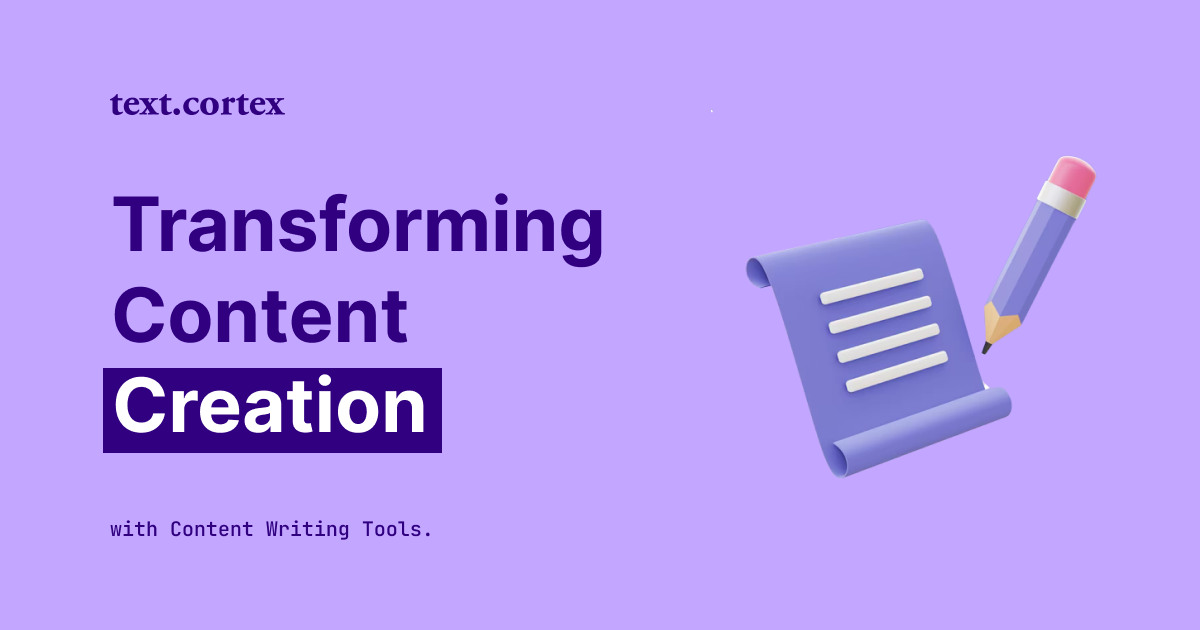Are you concerned about how to arrange your ideas into a nonstop textual jumble that effectively conveys the narrative of your concepts?
Writing an effective paragraph is one of the most important skills you can develop as a writer.
And having excellent paragraph writing skills at your disposal is one of the essential crafts you can develop.
However, paragraphs can’t write themselves, nor are they effective, compelling, and readable by default.
This article will walk you through tips on how to write a perfect paragraph that will bring another level of engagement to your story.
Let’s get into it!
What Is a Paragraph?
A paragraph is a unit of sentences all related to a single theme or idea. It is a common writing structure that we use to convey information in a clear and concise way.
Types of Paragraphs
There are many different types of paragraphs, such as:
- Expository paragraphs — These paragraphs rely on data, statistics, or citations. Such paragraphs are often seen in essays, academic papers, and journals.
- Descriptive paragraphs — A paragraph type often used in fiction writing. It provides various insights into the same thing.
- Persuasive paragraph — We use persuasive paragraphs to convince the reader of specific points. It is often used in editorials and opinion pieces.
- Narrative paragraph — A digestible segment of a story that separates a storyline into related chunks. This type of paragraph helps the reader follow the story through.
Why Is The Art Of Writing Paragraphs Essential For Writers?
A good paragraph is not just a collection of sentences, it’s a well-crafted whole with a beginning, middle, and end.
A good paragraph:
- Ensures that your content is organized and easy to read,
- Is concise and to the point,
- Provides relevant information that supports your argument or point, and
- Typically contains 3-5 sentences.
The following tips will help you write effective and engaging paragraphs for your readers.
How To Write Perfect Paragraphs and Boost Your Article’s Readability?
1. Brainstorm The Topic of Your Paragraph
Depending on what message you are trying to convey in your paragraph, the basic principle is to write the idea or thought on a paper.
The process is similar to playing a puzzle game. First, choose the idea and start forming follow-ups to support that idea.
For example, if you want to write a paragraph about koalas, here are some random thoughts to support that topic:
- What are koalas?
- What do they look like?
- What animals are similar to them?
- What are their body characteristics?
- What makes them different from the other spices?
Basically, there is no scheme for how to put your thoughts on paper.
To write a perfect paragraph for your article, start with the basics — get an idea, structure those thoughts into the paragraph, and connect the dots to a compelling writing flow.
Now that we have the idea, let's see how to structure those thoughts into a perfect paragraph.
2. Structure Your Paragraph
There are many ways to structure your paragraphs. You should have different kinds of paragraphs for different types of sentences, so you can always switch between them.
Here are paragraph types, based on their structure:
- One-Sentence Paragraph — This type of paragraph is probably the most familiar (the paragraphs that use just one sentence). These paragraphs often include information and statistics and do not necessarily require further explanation.
- Comparison/Contrast Paragraph — In a comparison paragraph, you describe the similarities and differences between two things (for example, two different books or two types of cars). The contrast paragraph only describes the differences between those same things.
- Cause-and-Effect Paragraphs — These paragraphs explain why something happens by explaining what caused it to occur in the first place (the cause) and how that affects everything else (the effect).
Let’s stick to the koala example from the previous step.
Here is how a solid paragraph looks like:
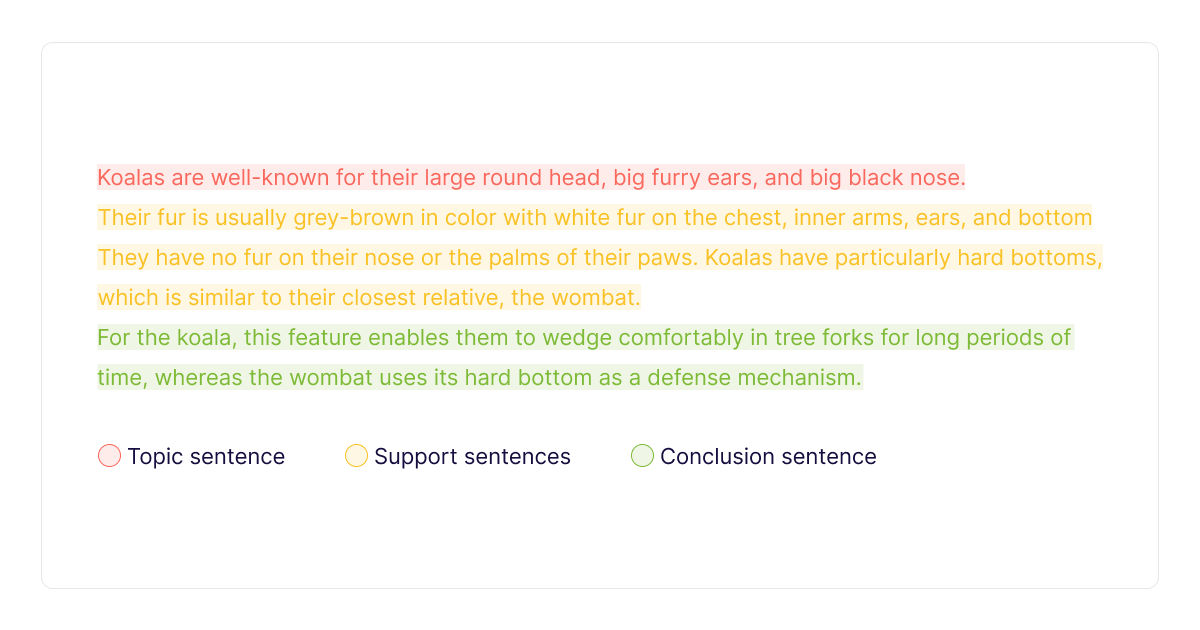
Now, let’s figure out how to write such a paragraph:
1. Write Your Thesis Statement
Start with an introduction that sets the tone for your paragraph.
State the main point of your paragraph, provide context and introduce any key ideas you plan to discuss.
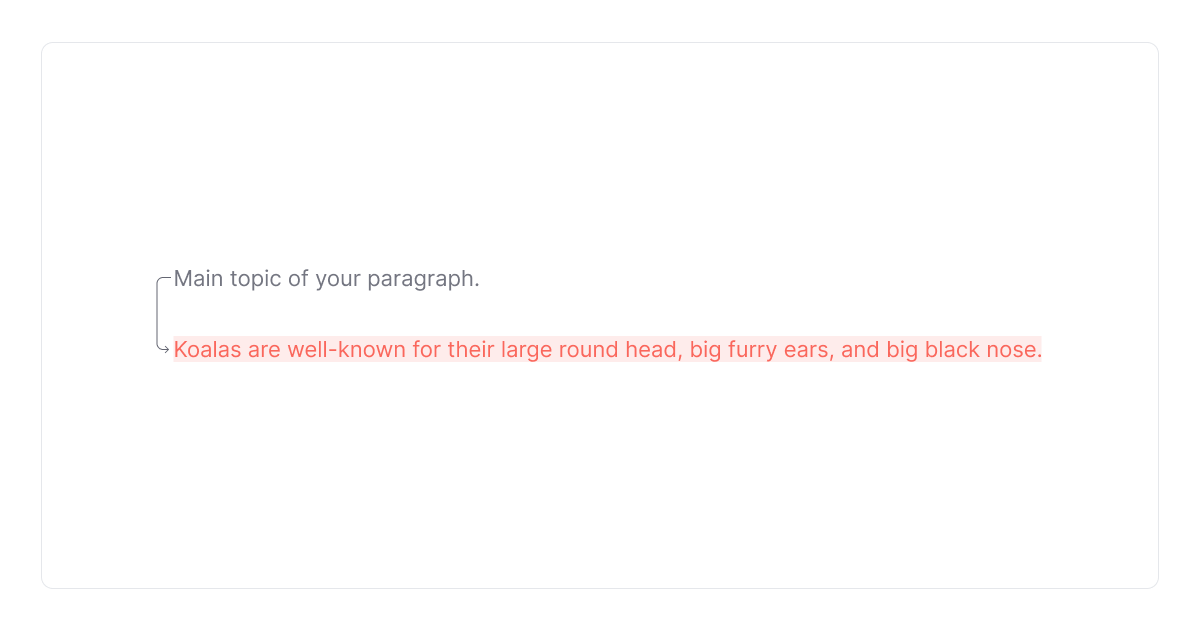
- Center the main topic of the paragraph,
- Tell the readers what the purpose of the paragraph is.
2. Write Supporting Sentences
Use descriptive language to paint a picture of what you’re describing.
Use concrete examples when possible to make your writing more memorable and understandable to readers.
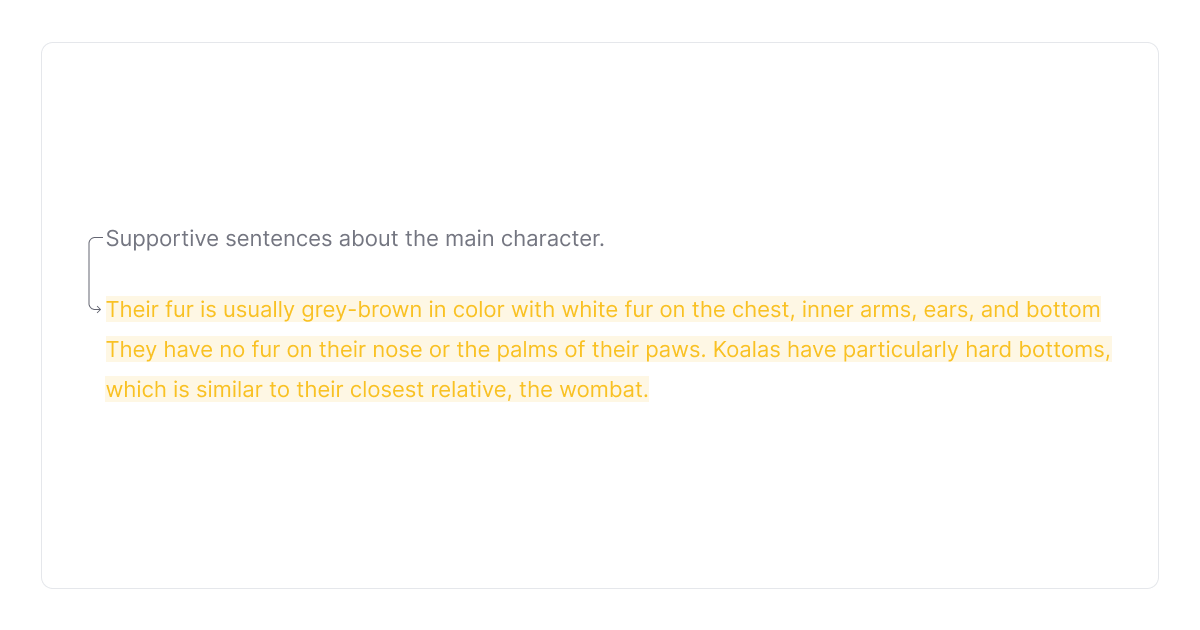
- Add more sentences related to the same idea,
- Create sentences that will prove a point of the main topic’s objective and support it.
3. Write Your Conclusion Sentence
Be sure to wrap up your thoughts in a powerful sentence or two that conveys the main point of your paragraph and leaves your readers eager to read on.
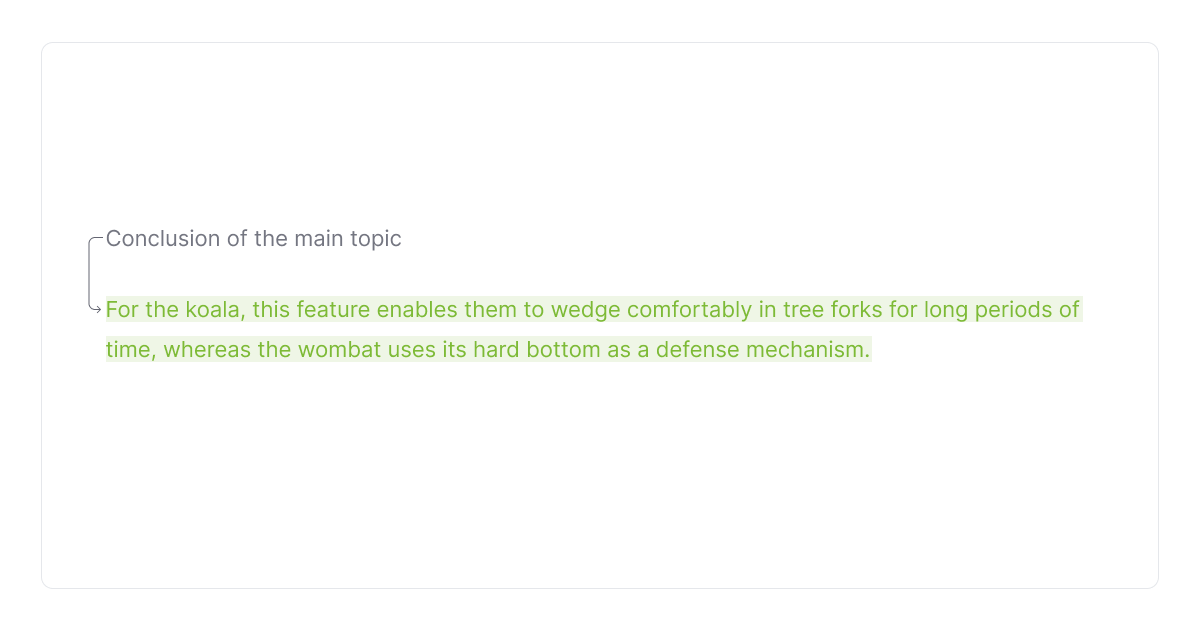
- Make a conclusion of the paragraph to conclude the story or close the thought.
Now that you understand how to write the paragraph let’s see when is the time to move forward and start the new one.
3. Know When To Start A New Paragraph
There are a couple of points you should consider before moving to the following paragraph:
- Is your paragraph too long?
- Do you want to start a new idea?
- Do you need to contrast a new point of view?
- Are you planning to add additional values to the main topic from a different perspective?
If any of the four questions have a 'yes' response, then proceed with creating the new paragraph.
And to keep consistency in your storyline, you can use transitions, which brings us to the next step.
4. Use Transition Words
We use a transition to create a “bridge” between two paragraphs, so the piece of writing flows naturally from one idea to the next.
Here is an example:
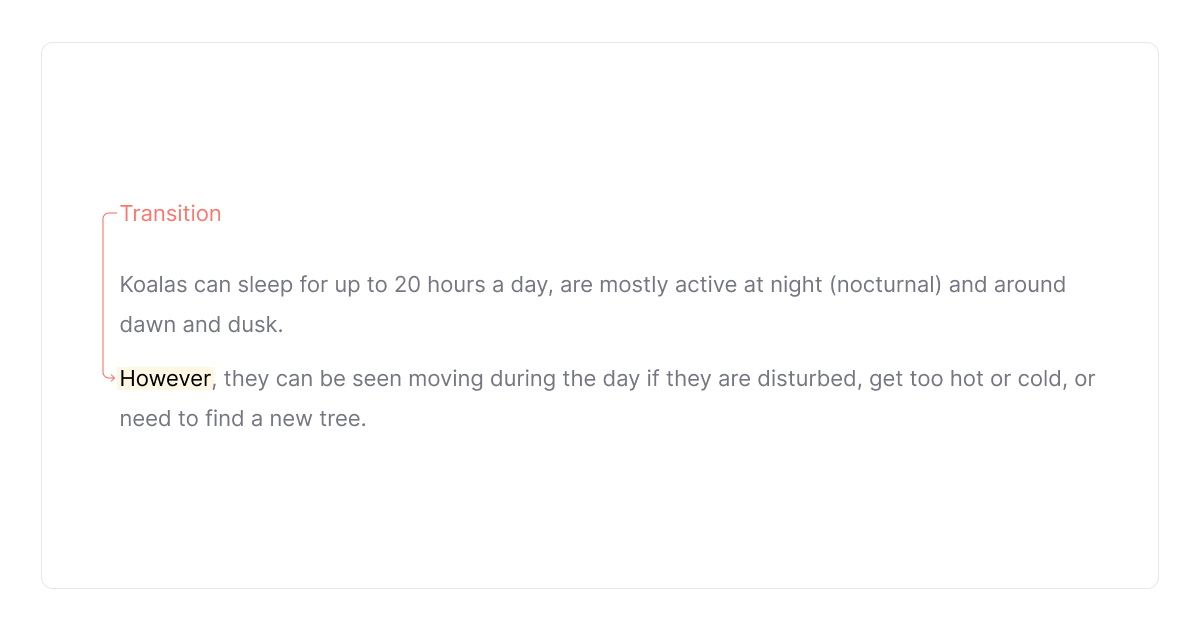
According to the purpose of the transitioning paragraph, this table list will help you smoothly shift between ideas:
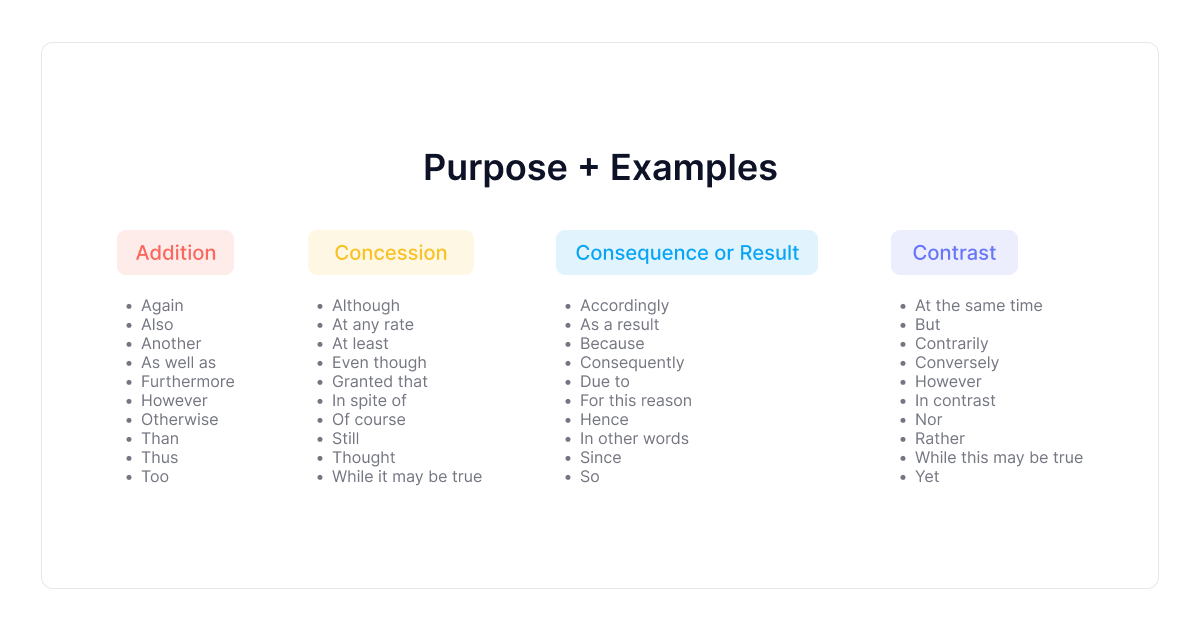
And, finally, now that you are done with structuring and connecting your paragraphs, let’s move to the next step.
5. Proofread Your Paragraph
There are three fundamental steps you need to follow in order to determine whether your paragraph is correct or requires more twerking:
1. Read It Out Loud
Writing gives you more linguistic opportunities than speaking does. And like any other craft, paragraph writing needs a little fine-tuning before it becomes perfect.
In that spirit, the best approach to determine whether the ideas are connected in a coherent manner is to read them aloud or to have someone else read your paragraphs for you.
2. Check Grammar and Spelling
Human error in writing is not such an uncommon thing. However, people who read content on the web take typos and grammar mistakes as relevant factor that determines content reliability.
Professional writers, for that reason, often include different grammar tools in their writing flow to keep those unforeseen errors in line.
Grammar tools will help you improve content readability, clarity, and engagement and keep track of misspelled words and grammar errors.
3. Rewrite Paragraph For Clarity
And finally, if you come up with a conclusion that your paragraph should sound more convincing or have a more natural flow, you can always rewrite it for better context.
Pro tip: It is not just you, we were all victims of faded inspiration. Thus, writers often include AI rewriting tools such as TextCortex in their writing process — to better organize their thoughts.
However, not all rewriting tools can rewrite entire paragraphs. Instead, most of them are focused on sentence rewriting.
With TextCortex rewriting extension, you can paraphrase both sentences and entire paragraphs. Here is what that process looks like:
Simply select sentences you need to rewrite (entire paragraph or portion of the paragraph), click on the logo, and hit the ‘Paraphrase’ button, and you-re good to go.
In addition, some AI writing tools offer such features in their web application. For example, TextCortex has that feature available in web applications and rewriting extensions.
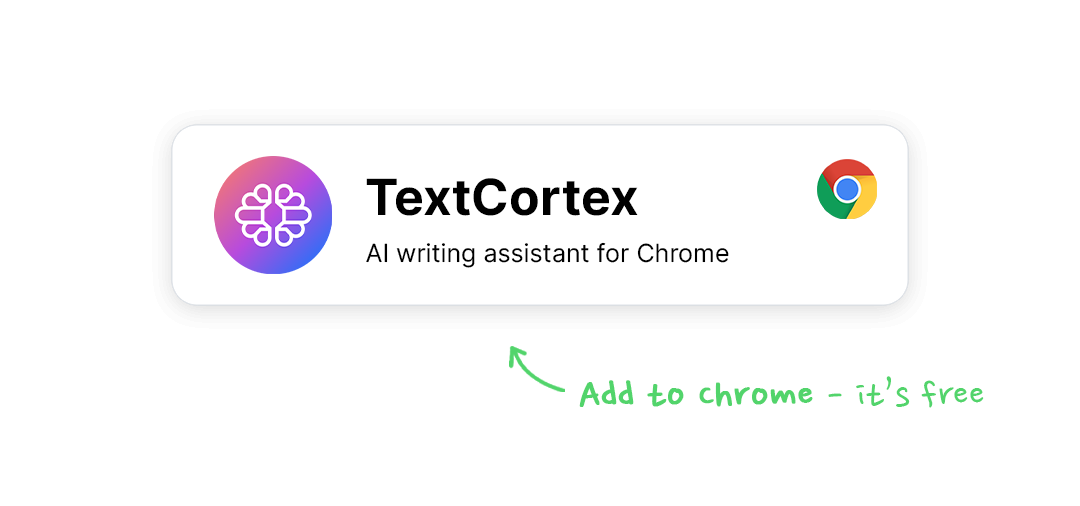
Final Thoughts
Paragraphs are a vital segment of your writing process. They help you to group your thoughts into a compelling story and make your writing more digestible for readers to follow the storyline till the end.
And as you can see, writing them requires no special skills — just some ground rules to follow and little practice.
With time and many articles at your disposal, the “how to write perfect paragraph” subject will become a routine job and one more writing achievement.
But how about starting to write perfect paragraphs right away while learning the process? All of that is possible with TextCortex.
TextCortex is a use-case module-based AI writing tool designed to take over 80% of your writing time while boosting your writing skills along the way.
It is available as a web application and Chrome rewriting extension.
By utilizing TextCortex, you will be able to:
- Create any content type within seconds (blog article, product descriptions, emails, ads, etc).
- Produce content at scale (up to 10x more than manual).
- Get rid of repetitive tasks.
- Edit and format your content on the spot with an editable canvas.
- Rewrite your sentences and paragraphs in bulk.
- Create blog articles on more than 30 platforms.
- Write emails from bullet points.
- Extend your thoughts from a single sentence.
- Save projects as templates.
Our pricing plan includes a free version with no limitation on exploring features — you will get 15 free daily creations (no credit card information is required).
You can earn more free creations by recommending and validating the tool.
Ready to test it out?
Sign up today and watch how TextCortex helps you transform your paragraphs into compelling pieces that engage the audience and improves your writing style.

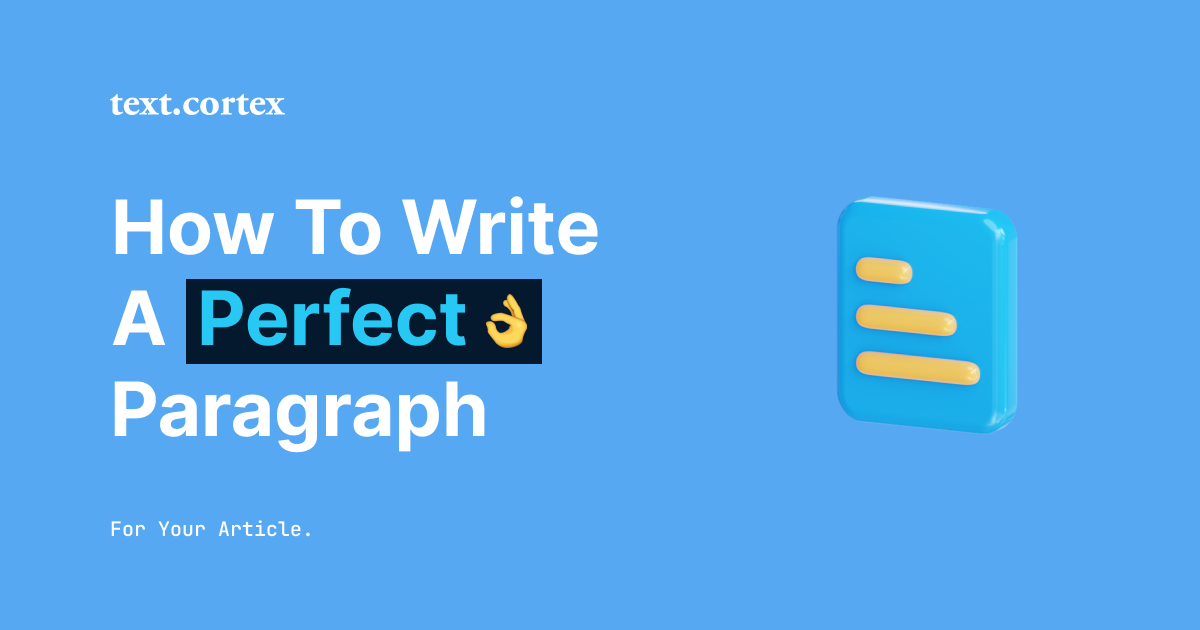
.jpg)
